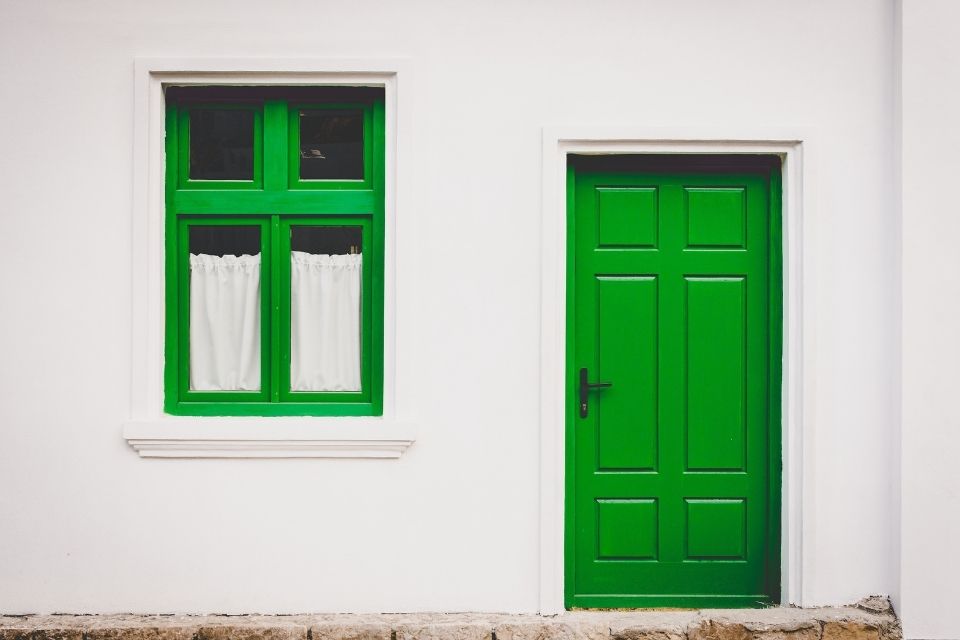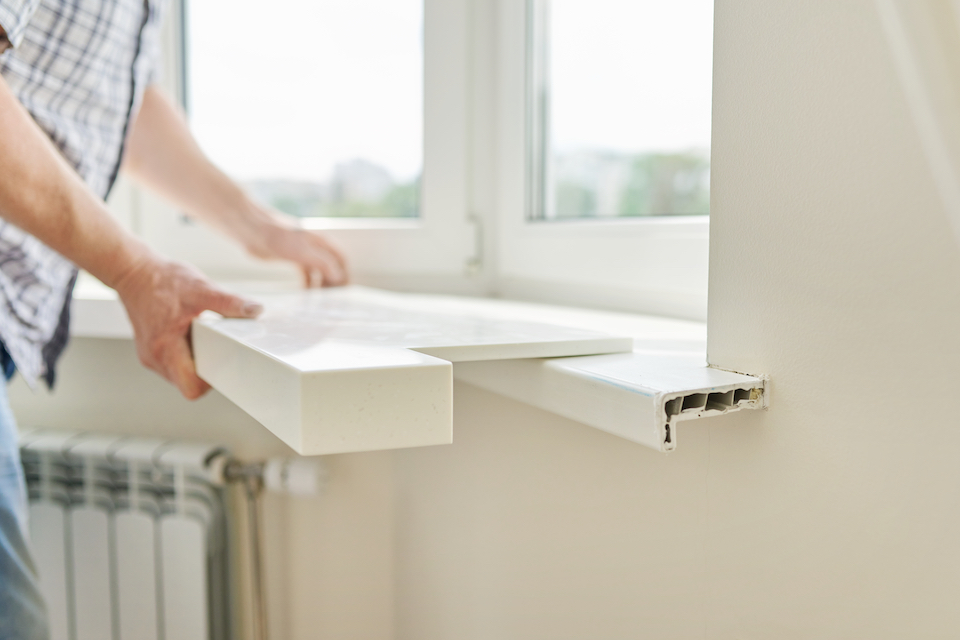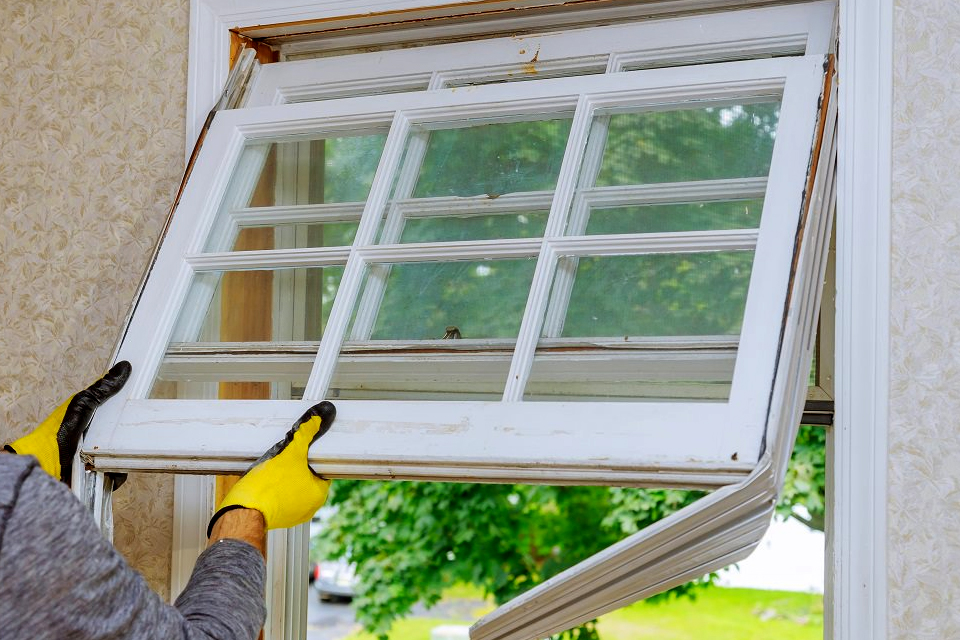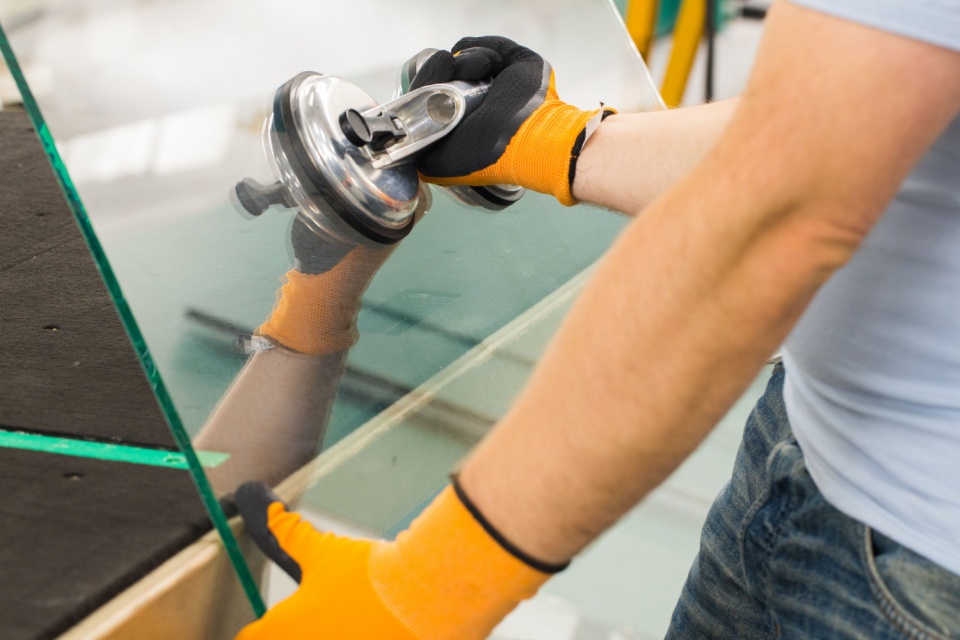Introduction
It’s pretty annoying when your doors won’t close, that’s a simple truth. But rather than managing an already bad situation until it implodes, it is important to know exactly what’s happening to your door. You know why? Because the solution is often quite simple too. It's also important to know when to be a DIY-er and when to call in the big guns.

This article is going to put you through everything related to that wonky internal door so that when the need arises, you can maintain your privacy and keep out that draught.
Why Won’t My Internal Door Close?
What’s the use of an internal door that won't close properly? You have to agree that it totally defeats the purpose. Altogether, there are a number of really basic reasons that your door won't close.
Knowing which one to tackle means that the problem is already half solved. So, sit back… and you're welcome.
The latch isn't engaging
The most common cause is that the door won't latch. To break it down a bit more, the latch on your door may not be engaging well with its corresponding latch plate. Have you noticed that rectangular metal plate fixed in the door frame? Well, if the door latch doesn't fit in it seamlessly, your door will definitely not close.

So, how do you know this is the issue? For one, you won't hear that snapping or clicking tone once you try to shut the door. All in all, if that sound is missing, you need to do something about the relationship between the latch and the latch plate.
Faulty hinges
No doubt, the functionality of a door is hinged on its hinges. So, for the most part, if your internal doors won’t close the hinges are the culprit.
If the hinges are not positioned right, then over time, your misaligned door will cause problems. As a result, you’ll notice that the door is actually straining to open, shut, and re-open.

Unfortunately, there is really no way to avoid bad hinges since these components do the most work. So, over time, you’ll probably need to work on them. Luckily, the fix isn’t something you cannot manage on your own.
Unlevelled
This is quite common when it comes to older doors, but sometimes there’s a poor construction problem right off the bat. But for the most part, what causes this is wear and tear. Simply put; the screws have managed to work themselves loose over time. Can you imagine holding the weight of the door while it opens and closes through the years?

It's not a huge problem, but it's quite annoying since it may leave marks on your floor or carpet. Even more, the top of the handle side of the door will constantly collide with the door frame. That will eventually stop the door from closing altogether.
Subsidence
Subsidence is a bigger problem in comparison to those listed above and as such, you should not expect a quick fix. It simply occurs when the entire building itself starts sinking to the ground. So, as the entire structure slowly lowers into the ground, areas that are not so solid will be affected. So, expect to see some changes in both doors and windows.

Now, we are sure you are asking what will these changes look like? For one, you’ll notice some serious warping in terms of the shape of the window and door frames. So, these fixtures will probably end up sticking or not closing suitably.
Door frame issues
Often when your door won’t stay closed, the problem lies with the door frame. You can simply check this by taking a step back to look at the door frame itself.
The gaps in between are all the evidence you need to confirm this predicament. If the gaps are too wide, the door probably won’t shut.
In the same vein, if the gaps are too tight, you guessed right if you reckoned the doors won’t close either. No, you do not have to uproot the door to tackle this issue. Luckily, this isn’t a problem you can’t fix on your own if you like to tinker.
Door swelling
Another common culprit when your internal door won’t shut is door swelling. Mostly with wooden doors, climate conditions tend to affect their all-around integrity over time. So, you’ll notice that they won’t only warp, but equally swell.

Any carpenter worth his coin will ensure that your door fits its frame perfectly. As such, once any warping or swelling sets in, it’ll be quite hard to open or close the door.
This is a very time-sensitive issue so, if you wait too long to fix a swollen door, the door is pretty much a goner. Nevertheless, it's not a problem you cannot remedy.
Internal Door Repair
The good news is that you can fix most of the issues that stop your door from shutting on your own. Sure, sometimes you need to call in a professional to take a look at it.
If you are a tinkerer at heart and don’t mind working with your hands, here are a few things you could do on your own when your door won’t close.
Repairing a latch that isn't engaging
If the door not latching is the case, you could take a shot at widening the gap in the strike plate itself. What this does it's to ensure that there’s a shorter distance for the latch to travel. To make this happen, a small saw file and a mill file are required.

What’s more, for this procedure, you do not need to detach the strike plate. simply open the door, lay the mill file in the gap present in the strike plate, then file away.
Once it’s the right size, having your door latch stuck or ineffective will be a thing of the past.
Repairing faulty hinges
If your door not closing, for the most part, it's usually the hinges that are the culprit. Thank heavens it's quite easy to fix. If you are into DIY yourself, you’ve probably seen or even packed a hinge with cardboard. It works like a charm.

Start by taking out the screws from just one hinge, then pull it out so that it rotates right out of your way. Once that’s done, place a slither of cardboard in that flat space you see underneath it, fix then place the hinge back over the piece of cardboard.
Fix the screws back in and that should do the trick quite well. If it does not quite do the trick, try to add some more cardboard.
Repairing an unlevelled door
If your door is unlevelled in any way, there is a quick fix for this. Opt for long wood screws to be fitted a bit deeper in the door frame. At that point, they should reach the timber stud that the frame is fitted into.
If that doesn't help, then go ahead to plug the screw holes using a whole lot of match sticks or rawl plug - if you have some. After that, apply some PVA wood glue to the holes where the screws go in, then stuff in as many matches as it can take. To neaten it up, snap the ends off before you re-install the hinges.
Repairing subsidence damaged door
Subsidence poses quite the challenge compared to the other options most of the other options on the list. Since it's a general problem, it requires more of a general approach if you want to fix it. Simply concentrating on the door is a very short-term fix.
For one, you need to get to the bottom of what's actually causing sinking. So, if the culprit is a leaky pipe, you need to tackle that. Even more, if it's a tree root, then you need to take that out as soon as possible. Once that is done, you can proceed to fix your wonky door.
Repairing door frame issues
Once you've checked and figured out whether the gaps in between are too wide or slim, you can make adjustments. You can do that by tightening or loosening the hinge screws.
If you loosen them, you'll automatically have a lot more space in between the door and the frame.

On the other hand, if you tighten them, you can make the door fit a lot better and there goes your problem with the door not closing. You can equally apply the cardboard fix mentioned earlier; which is a much simpler option.
Repairing swolen door
In this case, you have to really put some elbow grease on it because you’ll need to detach the door. For this, both a hammer and screwdriver are required with which to take out the pins in the hinge.
Once the door is out, look out for the damaged area and use a wood plane to shave off the swollen part.
To make it a bit neater, you can also go over the area with some wood varnish or paint. Then go-ahead to put the door back in place. Another route to take is to simply add an extra hinge in between the top and bottom hinges.
Door Maintenance
Maintaining your doors is just as important as fixing them up. In fact, if you play your cards right, you won’t have to do a lot of repairs now and then.
The great thing is that maintaining doors is not that hard, it's something you can incorporate into your all-around routine, and here’s how.

Routine cleaning
Dust, moisture in the air, and wear are common culprits when it comes to maintaining a door. For this reason, it is important to periodically clean your door periodically.
If you do this every month, it’ll do more than just make it look good, but it’ll save you some money on regular repainting and varnishing.
It should not take a lot of your time or effort and even better, all you need are common household items.
Get your hands on some dishwashing soap or shampoo then mix that with warm water, also using a lint-free cloth to wipe it down. Additionally, be sure you clean up any residual water and your door will remain as good as new for a while.
Check the timber frames
This is something you have to do to ensure that your door keeps closing effectively.
So, take some time out to check your timber door frame for cracks as well as some other problems that could stop the door from opening or closing. While you’re down there checking the timber frames, be sure to tighten all the screws in the hinges.
You don’t need to wait for a problem to arise before you tighten those screws. If you play your cards right, you won’t encounter any further problems when it comes to closing the door.
Simply get ahead of the problem and check those timber frames and hinges periodically.
Check the balance
When a door isn’t balanced, it makes it a lot harder for you to open and close. In the long run, an unbalanced door will depreciate until it's completely out of control.
To ensure that you get the best out of your door, be sure to check the balance from time to time.
Furthermore, if the door is wonky, it could be door frame related or could have something to do with swelling. Either way, there are some easy fixes you can apply, as stated above. Don't let it get out of hand.
Clean out the hardware
Whether it's the latches, hinges or knobs, your door hardware needs some cleaning now and then.
Those components that work hand-in-hand to ensure that you actually have a full functioning door need some occasional love. As mentioned in the first point, exposure to all sorts of elements can cause rapid deterioration.
So, all that exposure over time could get your doorknob stuck or even stop the whole door from functioning. For these components, you may need to visit your local hardware store to get a specific formula for cleaning.
Make sure the door tracks are free
Now, it may seem harmless the first couple of times to open or close your door with a hindrance in the way. But over time, this will undoubtedly come to bite you in the behind. It may start slowly, but one component after the other could fall apart.

For this reason, among others, it's incredibly important to make sure that there's nothing in the way when you're closing, opening, or even sliding your interior door.
Do I Need a New Door?

As is seen above, there's a lot of things you can fix and patch over when it comes to doors. But, in some cases, what's broken really can't be fixed. As such, you're going to need to get yourself a new door.
How do you know when repairing the locks is sufficient as opposed to getting a whole new door? The points below should help out.
The Hinges are squeaky
Most times, people think a good lubing up is all they need to do when their hinges squeak. But, there's a lot more involved and it could be a major sign that you need to change the door altogether.
In fact, the squeaking is an indication, not just an indication that the hinges are worn, but that the door itself is far spent. So, don't manage a door that can no longer hold its own. Take it apart and start afresh.
Cracks
The moment you see a crack in your door is the moment you need to get a new one. For one, you're probably hosting a lot of unwanted guests in between those cracks; it could be bed bugs and/or some other insects.
Even worse is the fact that the entire structure of the door is officially compromised. So, for your safety and that of anyone who uses the door, change it.

Draughts
You should never manage draughts because they are a major sign that your door needs to go. Once the seals around your door completely shrink or crack, there's no going back from one.
This could let all sorts of visitors into your home, ranging from breeze to bugs. So, it's best to get ahead of that with a new door.
A door that scrapes the ground
This may be awkward because, for the most part, people try to manage this.
It's actually a sign that your door is old and is ready to give up the ghost. Even more, you don't want to ruin a perfectly good floor because you're managing a bad door.
Carpenter Cost
Though most interior door related problems don't need professional attention, you never know when you'll need to call in some reinforcements. Whether it's for a big or small job, it's good to know what it'll cost you to get some help.

How much does a carpenter charge per day/hour?
There's no set standard as to how high or low a carpenter's service is going to cost you. In fact, their rates will probably vary according to skill level and experience. On that note, it's also imperative to mention that most carpenters will charge you for the job as a whole.
The estimate will probably include the parts used, their manpower, tools, and other things needed for the job. But if you do find someone who'll charge you by the hour it's going to cost about £20-30 per hour.
How much should specific jobs cost?
- Fixing hinges- £50-£150
- Latch - £40 to £250
- Subsidence - £6000
- Door Frame Issues - £150–£550
- General interior door repairs - £100-£350
- Door Breakdown - £200–£2,500
FAQs
Q. Why Won’t my PVC door lock?
A: This can't actually be narrowed down to just one issue. The fault could boil down to something as simple as the key, then again, the handle could be the culprit.
In other cases, it's extremely high or low temperatures that make everything run amuck. Or, there could be something blocking the door tracks.
Q. What Kind of Material Is Best for An Interior Door?
A: Since they don't have to deal with the elements as much as exterior doors, you have a bit of leeway in terms of the materials you can use to construct them.
For the best results, opt for a solid wood door. Not only are they sturdy, but they look good too. The downside is that they are a bit on the pricey side and will warp over time. To dodge both of these occurrences opt for a Medium density fibreboard door.
Q. Should I get a Flush or Panel Door?
A: For the most part, none is actually better than the other. The one you should go for is generally determined by the size of your pocket and your taste. Flush doors are the plain Jane's of interior doors, it's basically a flat surface with no detailing.

That blank canvas gives room for you to get creative. Panel doors as the name implies are fitted with panes spanning horizontally or vertically. The advantage they hold over their counterpart is elevated style.

Q: Q. How do I Mount an Interior Door?
A: This is not a feat for the faint of heart, or for people that are not great with their hands.
If you're one of them, then contact a professional, but if you fancy yourself a tinkered go ahead.
The best instructions you can get come from the manufacturer who supplied you with the door.
Q. Why won't my Door Hinge Hold Screws?
A: For the most part, the door has practically outlived its usefulness. But there are ways around
this if you want to patch it up. You could try replacing the door jamb for a start.
You could fill the holes in the wood with glue,
then stick some match sticks in. Ultimately, replacing doors is the best way to go.
Sources
- https://www.savoytimber.com/help-and-advice/fix-door-wont-close/
- https://www.bhg.com/home-improvement/door/door-repair/how-to-fix-door-hinges/
- http://www.subsidence.co.uk/what-is-subsidence/
- https://www.hunker.com/12228548/what-can-i-do-about-a-wooden-door-that-has-swelled
- https://www.prettyhandygirl.com/fixing-common-door-problems/







